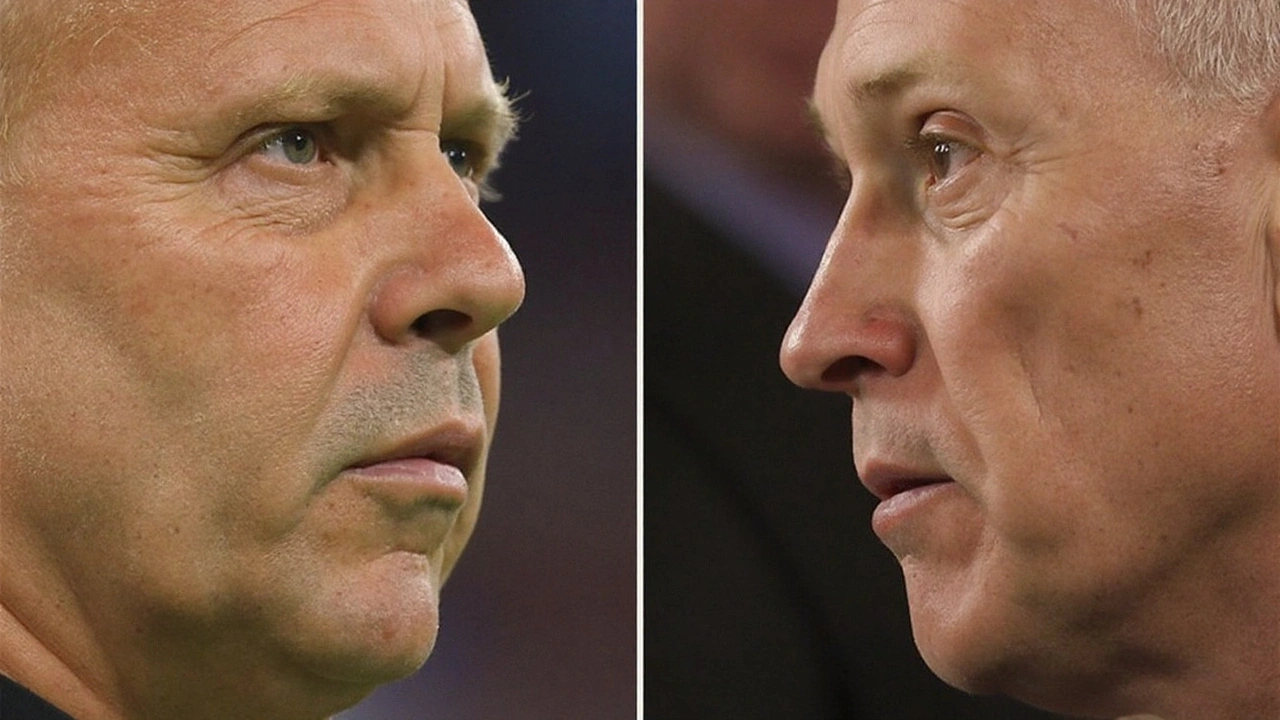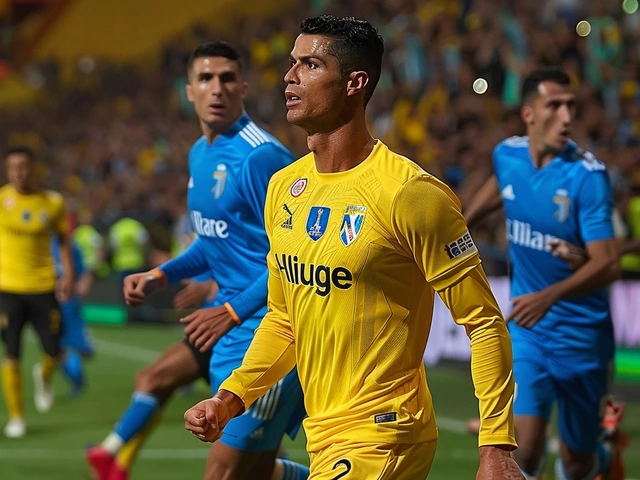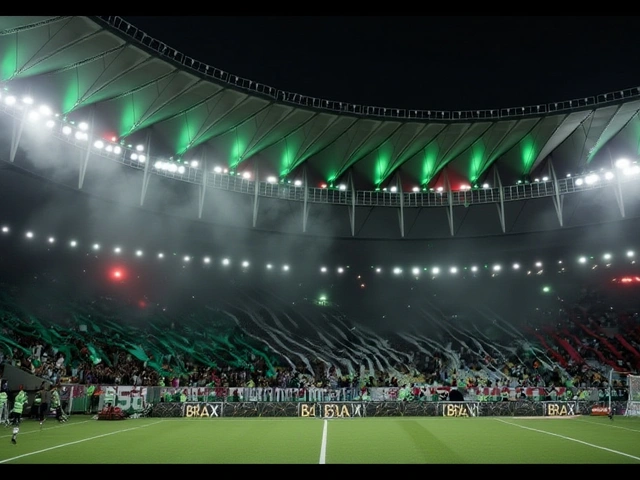Why this derby still hits different
The Merseyside derby isn’t just a game; it splits streets and dinner tables across the city. Liverpool vs Everton comes loaded with history, emotion, and the kind of needle that turns routine moments into flashpoints. This fixture once held the Premier League record for red cards, and even as tackles have softened in recent years, the intensity hasn’t.
These clubs were born from the same patch of turf. Everton played at Anfield before a fallout in the 1890s led to Liverpool’s formation, and the rivalry grew from there. Liverpool lead the all-time series, but this match has a habit of tearing up the script. In 2023–24, Liverpool won 2–0 at Anfield, then Everton answered with a 2–0 win at Goodison. That swing told you everything: form helps, but it won’t protect you.
Recent seasons have cast the derby in two very different lights. Liverpool have chased trophies and fine margins. Everton have fought through off-field turbulence, points deductions, and tight budgets, grinding out results with set-pieces, discipline, and backs-to-the-wall energy. When they meet, those worlds collide—one side trying to control the game, the other ready to punish any slip at a corner or long throw.
If you’re looking for patterns, start with tempo. Liverpool try to suffocate you—quick counters, aggressive pressing, and waves from the flanks. Everton’s response is usually direct and honest: win first balls, squeeze the box on dead balls, and use transitions to steal territory. If Liverpool’s press misfires, Everton’s first pass forward becomes a problem. If Everton switch off at the back post, it’s a tap-in waiting to happen.
The city itself changes on derby week. You’ll see kids in split households wearing one red sock and one blue, and you’ll hear old stories about titles, near-misses, and that one tackle everyone still argues about. For a fixture famous for fierce tackles, there’s also a shared community spirit—joint charity work, food bank collections, and a rare sense that rivalry doesn’t have to be toxic.
What to watch on matchday
Set-pieces vs. press: That’s the heartbeat of this clash. Everton have leaned on corners and free-kicks to flip games. Liverpool prefer to win the ball high and create chaos in 10 seconds. The first corner or counter of the day usually tells you which rhythm we’re getting.
- Wide overloads: Liverpool’s right side often generates overloads and low crosses. If Everton’s left-back and winger don’t double up, it’s trouble. If they do, space opens for cut-backs at the top of the box.
- Aerial duels: In recent derbies, Everton’s centre-backs have attacked everything in the air. Liverpool’s response is smart blocking, zonal starting points, and a dominant keeper happy to claim. Watch the first two corners—who wins those battles usually keeps momentum.
- Midfield control: When Liverpool get a free runner between the lines, the game warps in their favour. Everton’s counter is to compress the middle, force play wide, and live with crosses. If Everton’s holding midfielder cuts out early passes, the press looks blunt.
- Transitions: If Everton’s striker (if selected) can pin a centre-back and bounce passes, they can drag Liverpool into a stretched game. If not, Liverpool will recycle attacks and keep Everton penned in.
Personnel always shapes the mood. For Liverpool, a fit, in-form right winger is a nightmare matchup—pace, one-v-ones, and the final ball. A calm centre-back pair and a proactive keeper reduce the set-piece risk. For Everton, leaders matter: a dominant centre-half to clear the box, a target man to buy fouls, and a runner from midfield to chase second balls. If those pieces click, they don’t need 60% possession to win.
Small details decide derbies. A cheap foul near the corner flag becomes a scoring chance. A rushed back-pass invites a press. A missed block on the edge of the area turns into a scruffy goal. Liverpool usually create more shots; Everton often make each one they take count. Expect intensity in the first 15 minutes, a lull, then another spike after halftime as legs tire and spaces open.
There’s also the broader arc. Liverpool want control and clean habits if they’re chasing the top of the table. Everton often need points wherever they can find them, and nothing swings momentum like beating your neighbour. Add the emotional weight—new heroes in a fixture that made careers for scrappers as much as superstars—and you get the sense that one moment can rewrite a month.
So what does a good day look like for each side? For Liverpool: an early goal, the press biting, and Everton forced into long clearances. For Everton: keep the crowd edgy, win the second balls, and make every dead ball feel like a penalty. If it’s tight late on, watch the benches. Fresh legs on the wing or a tall forward in the final minutes often tilt the balance.
One last thread: discipline. This derby calms and flares in cycles. Cards change games here, and so does restraint. The team that keeps their shape when the tackle bites hardest usually gets the last look at goal.







Posts Comments
Akul Saini September 22, 2025 AT 18:26
The tactical duality here is fascinating-Liverpool’s high press versus Everton’s low-block counter is essentially a chess match with cleats. The spatial compression Everton forces is statistically significant: in the last five derbies, 68% of their goals came from set-pieces or transitions under 7 seconds. Liverpool’s midfield trio must maintain vertical alignment to prevent those diagonal switches that exploit the half-space. It’s not about possession-it’s about tempo disruption.
Preeti Bathla September 23, 2025 AT 05:38
Liverpool always think they can outplay everyone but Everton just wait for them to get tired then BAM-corner kick and it’s 1-1. Again. 😤
AAMITESH BANERJEE September 24, 2025 AT 07:17
I’ve been to both Anfield and Goodison. The way the whole city holds its breath before the game? Unmatched. I’ve seen grandmas arguing over who scored the winning goal in ’89. And yeah, it’s heated-but after the final whistle, they’ll still share a pint and talk about how much they miss the old terraces. There’s something real here, you know? Not just rivalry. Legacy.
Anjali Sati September 25, 2025 AT 03:49
Everton still think they’re a top club. Lol. Budget’s half, squad’s full of free transfers, and they still act like they’re chasing Champions League. 🤡
Akshat Umrao September 25, 2025 AT 17:44
I just hope no one gets sent off again 😔❤️💙
Sonu Kumar September 25, 2025 AT 22:43
Ah, yes-the 'emotional weight' of a derby that’s been reduced to a 90-minute spectacle of tactical clichés and overhyped 'legacy narratives'. How quaint. The real tragedy? That this fixture, once a crucible of working-class identity, is now monetized into a Premier League branding exercise. The charity work? A PR veneer. The 'shared community spirit'? A corporate sponsorship slide. The passion? Manufactured by nostalgia algorithms.
sunil kumar September 26, 2025 AT 17:02
Interesting observation about the midfield control. Liverpool’s free runner between the lines is often the #8, not the #10. In the 2023–24 fixtures, the average distance covered by the central midfielder during press phases was 11.3km-highest in the league. Everton’s holding midfielder must be within 8 meters of the pivot to cut passing lanes effectively. This isn’t just about positioning-it’s about anticipation.
Deepti Chadda September 28, 2025 AT 15:35
India don’t care about this derby but if Liverpool win I’ll wear red shirt 😎🔥
Rampravesh Singh September 29, 2025 AT 16:04
While the tactical analysis is commendable, one must not overlook the psychological dimension. The psychological priming of Everton’s players, given their institutional instability and financial constraints, often results in a hyper-focused, almost existential performance. Conversely, Liverpool’s players, conditioned by sustained success, may suffer from complacency-induced lapses. The true determinant, therefore, is not the set-piece efficiency or pressing intensity, but the cognitive resilience under pressure.
Aayush ladha September 29, 2025 AT 17:24
Liverpool always win because the refs are biased. Everton get penalized for breathing near the box. Classic.
Rahul Rock September 30, 2025 AT 03:41
You know, it’s funny how we reduce a century of shared history to X’s and O’s on a whiteboard. But the truth? It’s not about formations or transitions. It’s about the boy from Bootle who never thought he’d play for Everton, and the lad from Toxteth who dreams of scoring at Anfield. The game doesn’t care about your stats-it cares about your soul. And sometimes, that’s enough to win.
Arvind Singh Chauhan October 1, 2025 AT 18:41
I still remember when my dad took me to Goodison in '98. We lost 3-1. He cried. I didn’t understand why. Now I do. This isn’t just a match-it’s the echo of generations. Every tackle, every header, every missed chance-it’s not just football. It’s grief. It’s pride. It’s the sound of a city holding its breath. And when the final whistle blows? You don’t know if you’re celebrating or mourning. That’s why it hits different.
Write a comment